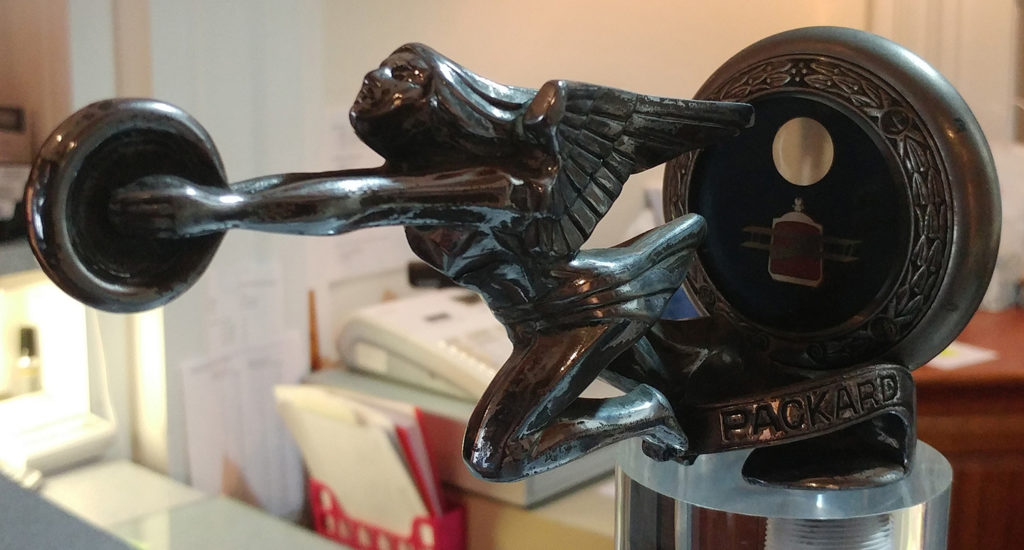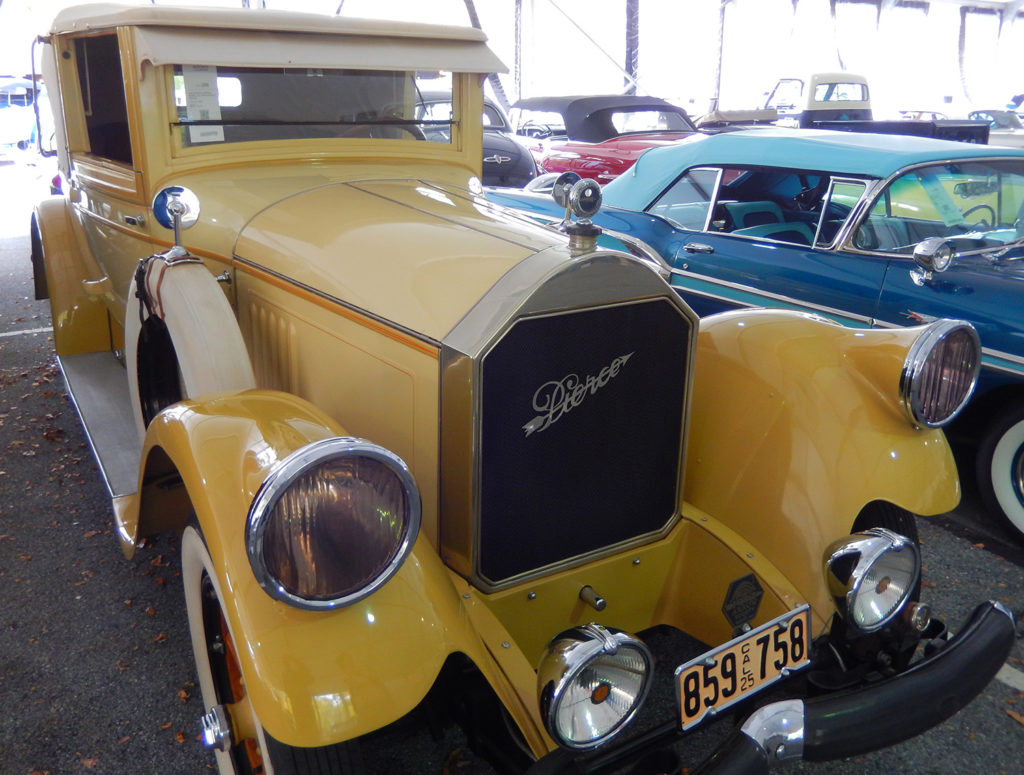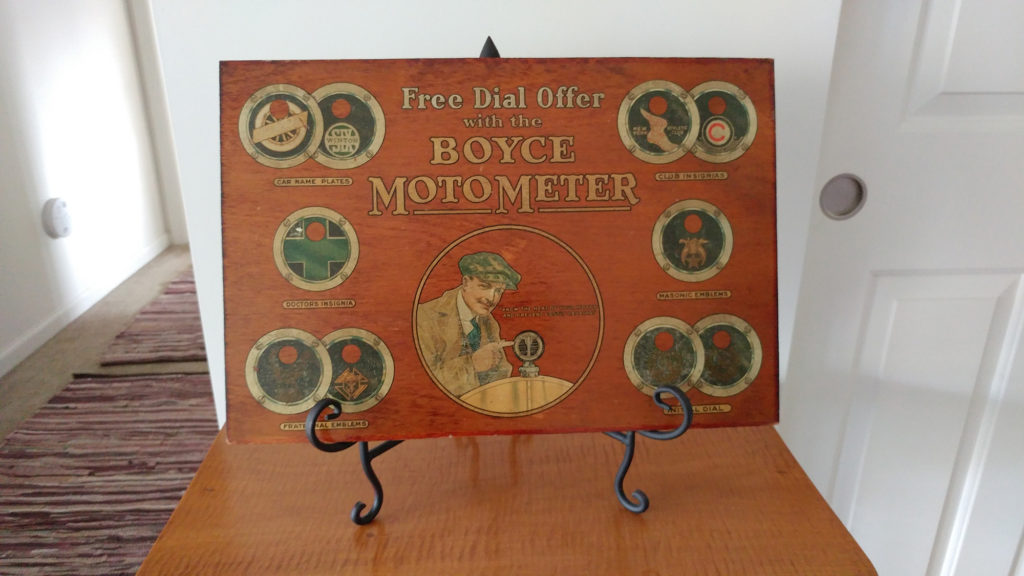Clax Motometer Collection Exhibition
by D.E. Bentley –

For every invention and inventor immortalized throughout history, there exists a string of less well know inventions that form an intricate – often overlapping – web of human ingenuity at work. An upcoming exhibit at the Ontario County Historical Museum offers an opportunity for automobile enthusiasts, or anyone interested in or curious about automotive memorabilia, to explore one, perhaps lesser known link in the intricate and ongoing development of the automobile.
MotoMeters: Early American Temperature Indicators – A Hundred Year History and Legacy Exhibit – will run from February 2 – September 8, 2018 at the museum – located in an historic Georgian Revival building at 55 North Main Street, Canandaigua, NY. This unique automobile technology exhibit, dating to the early 1900’s, is being offered in conjunction with the Ontario County Historical Society’s 2018 World War I Theme.
Motometers, early automotive radiator-mounted temperature gauges, are the forerunners of digital temperature gauges and check engine lights. The exhibit’s rich materials are from the extensive collection of automotive industry historian Francis Clax, a resident of Canadaigua, NY. The Clax MotoMeter Collection is the most historically significant and comprehensive collection of it’s kind, offering viewers a unique glimpse into the automotive industry’s past.
The “internal-combustion engine automobile temperature indicating device,” more commonly referred to as the Motometer was invented by Harrison Hurlbert Boyce, a known automotive accessory inventor, to address the issue of damage in overheating internal combustion powered engine automobiles. Boyce filed and received a number of related U.S. patents from 1913-1914 and in 1918, including his patent for an “Indicating System and Apparatus for Internal-Combustion Engines” (U.S. Patent Number 1,090,776, March 17, 1914), which fully depicted many components that make up his indicating instrument. By 1915, his marketed invention had become standard equipment in some makes of automobiles. By 1926, thanks to a marketing program that enabled the nearly 250 independent automobile manufacturers to use logoed dial plates, the BOYCE MOTO-METER was a common feature on nearly every American-made automobile. This initial success, for Boyce and several lesser-known competitors, was short lived. By the 1930s, changes in engine design and automobile technology were making radiator- mounted motometers obsolete.

The CLAX Motometer Collection, the “finest and most comprehensive ever assembled,” offers visitors an in-depth exploration of motometers. The collection contains “numerous authentic original documents, manuals, receipts, ads, manuals, catalogs, original accessories and other rare artifacts; most in like new, original factory correct working condition.” The collection also offers a visual, factual representation of this niche industry’s history from beginning to end, from patented wonder to automobilia collectables.
For those already excited about this exquisite collection or those newly inspired after their exploration of the exhibit, Moto-meter collector Francis Clax has also founded an online site: www.motometercentral.com. – MotoMeter Central TM. According to the site’s information, Clax began collecting automobiles in 1976 and motorcycles a couple years later. He started collecting motometers in 2011, and it is obvious that this quickly morphed into an obsession. The site offers a wealth of information for anyone interested in learning more about motor heat indicators.

The site’s “Motometer Origins” centers on Boyce’s role in the advent of motometers, with information organized under various sub-headings: Origins and Patents, Glossary and Terms, Indicating Methods and Mechanisms, Boyce Moto-Meter Model Types and a Boyce Moto-Meter Gallery. There are additional sections on Boyce’s competitors and supplemental information for motometer collectors, including a new online article series on individuals influential in the development of the industry. The entries and many images are linked to additional information. The site also offers contact information and opportunities to network with other automobilia collectors and enthusiasts, something one might be inclined to do after a look at the exhibit and Clax’s online site.

the Motometer was invented by Harrison Hurlbert Boyce, a known automotive accessory inventor, to address the issue of damage in overheating internal combustion powered engine automobiles. Boyce filed and received a number of related U.S. patents from 1913-1914 and in 1918, including his patent for an “Indicating System and Apparatus for Internal-Combustion Engines” (U.S. Patent Number 1,090,776, March 17, 1914), which fully depicted many components that make up his indicating instrument. By 1915, his marketed invention had become standard equipment in some makes of automobiles. By 1926, thanks to a marketing program that enabled the nearly 250 independent automobile manufacturers to use logoed dial plates, the BOYCE MOTO-METER was a common feature on nearly every American-made automobile. This initial success, for Boyce and several lesser-known competitors, was short lived. By the 1930s, changes in engine design and automobile technology were making radiator- mounted motometers obsolete.
This exhibit and the museum’s other offerings provide another reason to visit and explore Downtown Canandaigua – with its rich historical past and intriguing and unique shops and stops.
All photos provided by Ontario County Historical Society via Francis Clax